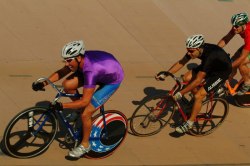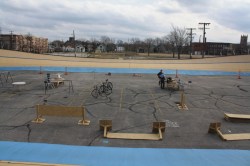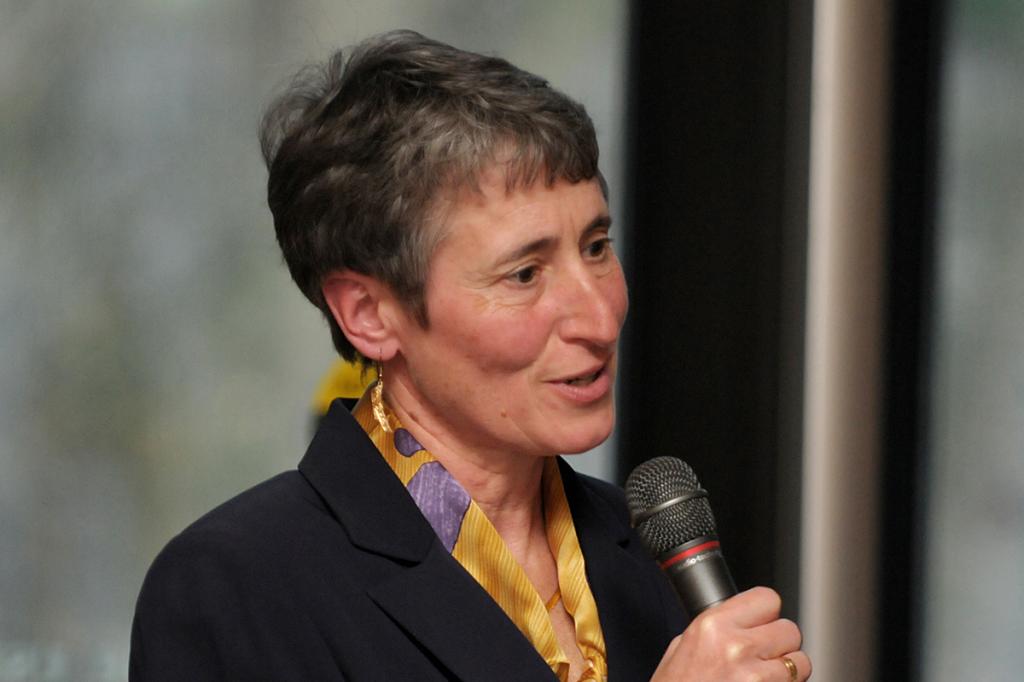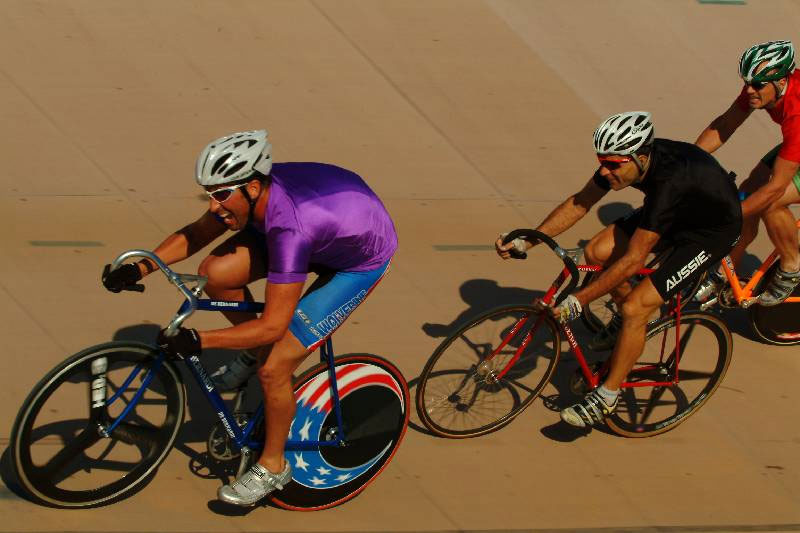
V-WorldWide
In the early 20th century, if residents of America’s burgeoning cities didn’t feel like going dancing or to the theater, they had another option for live entertainment: bike racing. Now, thanks to some ambitious bike activists, the pastime has returned to some of the nation’s roughest neighborhoods via crowdfunded, volunteer-built velodromes.
What’s a velodrome, you ask? Picture a wooden Nascar track with high, banked turns. They offer riders dizzying, X-Games-style thrills, as seen in this bike-cam video — and some pretty spectacular spills to boot. They used to be commonplace in the U.S. According to bicycle historian David Herlihy, America’s first velodrome was built in Brooklyn in 1869, and many hockey stadiums doubled as velodromes for epic, six-day endurance races.
But although track racing has remained popular in Europe — it’s been an Olympic sport since 1896 — stateside, velodromes went the way of the icebox after World War II. Recently, however, these tracks have begun to reappear. A 166-meter velodrome opened in Chicago in 2011. That was joined, in August 2012, by a similar one in Cleveland. Yet another velodrome will soon go up in Pittsburgh.
And here’s the kicker (or kickstand, if you prefer): These velodromes occupy previously vacant land in struggling parts of town. Think $3,000 bikes zipping through neighborhoods of $3,000 houses.
Why would anyone build an elite, European-style athletic facility in the rustiest precincts of the Rust Belt? The answer comes from the convergence of two renaissance movements — one aimed at reinvigorating cycling, the other America’s inner cities.
The architect of these tracks — literally — is Dale Hughes of Rochester Hills, Mich., a lifelong cyclist and designer of world-class velodromes via his company V-Worldwide. The Chicago, Cleveland, and Pittsburgh tracks are his designs.
“The reality is that cycling is small sport,” Hughes explains. “We cyclists have to win over one rider at a time.” Better to do that in the city than the ’burbs, he says. “It’s harder to get kids to bike in the suburbs because they are booked 24/7 all summer long.” So why not bring a little bit of Europe to the ’hood?

From the outside, the Cleveland velodrome looks like a Noah’s ark of modern materials, with high, sloping sides cradled in scaffolding. Its floor is of marine plywood bolted to sections of steel roof trusses — the kind that support the ceiling in big-box stores. It took 250 people more than 3,000 hours to build. (Here’s a YouTube video of the work.) More than 100 people made donations of $1,000 or more toward the $300,000 cost.
On a recent Sunday afternoon, two guys in spandex pulled into the Cleveland track for a few friendly races. Gary Burkholder, an IT guy who lives in suburban Parma, and a friend started by circling the bottom of the track. Their thin wheels made a pulsing rumble as they circled. As they gained speed, they ascended toward the upper rim, and as they did, the surrounding neighborhood hove into view: rows of boarded-up, empty houses.
This is Slavic Village, and hints of its proud past remain, including the athletic center of Cleveland’s Czech Cultural Association right across the street. But the neighborhood had slowly deteriorated before the Great Recession KOed it. “When the housing crisis first hit, this neighborhood had one of the highest foreclosure rates in the country,” Burkholder told me between heats.
There was once a hospital where the velodrome now stands, but the land was vacant for 10 years. Now the city owns and leases it to Fast Track Cycling, the nonprofit that operates the velodrome, for $1 a year. Burkholder serves on its board.
To bridge the cultural divide between riders and nearby residents, Fast Track has provided urgently needed youth programs. The group has a trailer of racing bikes and helmets for kids to borrow. In 2012, Fast Track sent several kids from the neighborhood to the Ohio State Track Championships.
“The velodrome complements our community’s commitment to get people biking,” says Marlane Weslian of the nonprofit Slavic Village Development.
“We genuinely hope kids fall in love with cycling,” Weslian says. But there’s a more practical motive, too: One-third of neighborhood residents don’t have cars, according to Weslian, so the velodrome’s organizers are teaching kids cycling skills that they will use for years to come.
The location does have some drawbacks, however. In this neighborhood, everything has to be locked down. I was told that a nearby community center has had its manhole covers stolen and sold for scrap — twice.
And in some respects, cycling seems to be a hard sell, and not just because of the expensive gear. In Chicago, when volunteers organized a fix-to-own bike program for local kids, only a handful signed up. Maybe that shouldn’t be a surprise — a velodrome is a curious thing to put in a long-suffering neighborhood. What’s next, a yachting club or inner-city polo ground?
But maybe it’s not just the cultural divide that keeps kids away. The Chicago track, built on the site of a former steel mill, is “aggressively banked,” which is cyclese for damn steep. “It’s terrifying at first,” says Dana Kotler, a Chicago physician and bike enthusiast.
Also, track bikes are fixies with no brakes, a fact not lost on the neighborhood youth. As one kid told me enthusiastically, “My friend rode on it. He fell. But he said it was fun.”
Ultimately, these tracks are about something more than thrills, however. “The velodrome is one more element of building a vibrant, city-wide bike culture,” says Ethan Spotts of Chicago’s Active Transportation Alliance. It’s a culture that Chicago and other cities once had in spades — and with a little luck and a lot of elbow grease, they’ll someday have again.
Travel for this article was supported by a grant from the Fund for Environmental Journalism.



